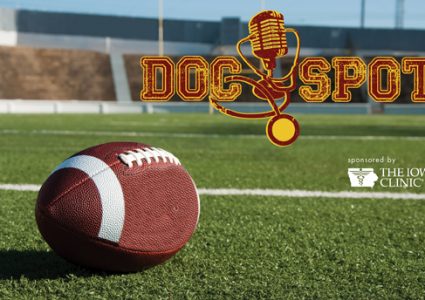By Chris Williams, CycloneFanatic.com Publisher
Your expert injury report for Saturday’s contest with the Iowa Hawkeyes is brought to you by the Iowa Clinic.
Today’s piece includes injury notes on Kelechi Osemele and Stephen Ruempolhamer.
CF: Iowa State’s 347-pound left tackle Kelechi Osemele missed significant playing time on Saturday after tweaking an ankle that he previously sprained during fall camp. Paul Rhoads said that Osemele ran on Sunday night and should be good to go this Saturday. Two questions – Is a sprained ankle worse for a 347-pound man, compared to a 200-pound man? Number two, for a lingering ankle injury like this, how long will it take until it is back to 100 percent?
Iowa Clinic Foot & Ankle Surgeon, Dr. Eric Barp says:
"Although Osemele will be ready to go on Saturday it is likely that his ankle will be heavily taped to add stability and prevent further injury. A sprained ankle is a serious situation no matter how heavy the person may be. It may be harder to rehabilitate from the ankle injury with the added stress and strain from his weight.
As far as a lingering ankle injury, it may bother him for the rest of the season if he does not take the time to properly let the ankle rest and heal. Repetitive motions will continue to irritate the ankle allowing it to continue to be painful for the player."
CF: Two Iowa State players left Saturday night’s game against Northern Iowa with stingers. What exactly is a stinger and can that injury carry over from week-to-week? Note that both of these players came back into the game for Iowa State.
DMOS Orhopaedic Surgeon, Dr. Nicholas Honkamp says:
A stinger is an injury to the nerve supply of the upper arm. The nerve supply, called the brachial plexus, originates as a collection of nerves arising from the spinal cord in the neck. Collectively, these nerves supply all the muscles and the sensation to the entire arm. The injury is named because of the burning or stinging sensation that is felt by the athlete down the arm. They typically occur in football during a collision when the shoulder is forced downward and the neck is forced towards the opposite shoulder, thereby stretching the nerves as they course through the side of the neck down the arm. The athlete typically experiences pain, weakness, and a burning or tingling sensation down the arm. The vast majority of stingers last only seconds or minutes. Football players can typically return when the symptoms resolve and they have full strength in the arm. This often happens during the same game. Athletes are withheld from further play only if the symptoms persist, they have neck pain, or the athlete has experienced multiple stingers.
Follow up…
CF: Iowa State defensive tackle Stephen Ruempolhamer had meniscus surgery on Aug. 26. He managed to play sparingly on Saturday night. What is his outlook for this week’s game against Iowa?
The meniscus is the soft cushion-type material situated between the bones in the knee. Each knee has two, one on each side of the knee. They function as shock-absorbers. Unfortanately, they are often torn during sports activities when the knee twists and the meniscus is caught between the bones, cuasing a tear. Meniscus tears can be treated by removing the torn portion of the meniscus (called a menisectomy), or by repairing the torn meniscus with small suture (called a meniscus repair). While the recovery time varies with the size and location of the tear, athletes treated with a menisectomy can often return to sports in 2-4 weeks. In contrast, those treated with a meniscus repair require multiple months of rehabiliatation to allow the meniscus to heal. Stephen Ruempolhamer likely had a menisectomy considering his quick return time. Depending on the amount of soreness and swelling in his knee, I would expect that he will play more snaps than last week, but likely not as many as a regular starter.





